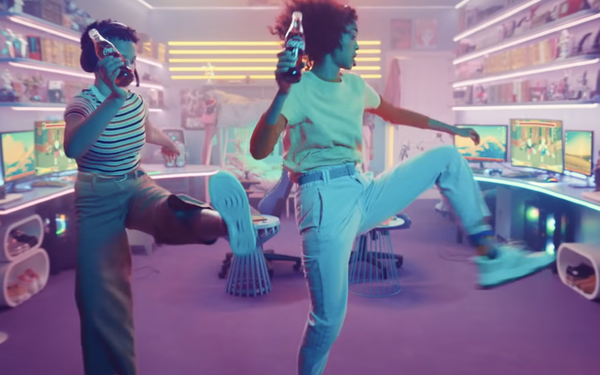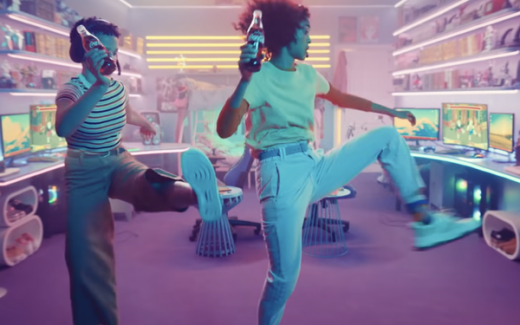Sounds Of Success: Coke Scores High In Brand Audio Rankings
Sounds Of Success: Coke Scores High In Brand Audio Rankings

Image above is from video that includes music from hip-hop artist Tyler, The Creator.
If there’s a lesson CPG brands can learn from Coke, it’s that things go better with the right sounds.
That’s one of the takeaways from the latest Best Audio Brands report from Amp Sound Branding.
Coke placed #4 on Amp’s list of 100 brands that made the best use of audio in their advertising content in 2020.
Last year, audio became more important for brand identity and customer experience because of COVID-19. More consumers favored app-based and contactless digital interactions amid a rise in streaming and audible content consumption.
Partnering with media and AI companies Storyclash, Veritonic and Cyanite, Amp measured the “sonic brand identity” of the 100 Best Global Brands as ranked by Interbrand. The analysis measures such performance metrics as customer engagement, trust and recognition and return on investment.
Several other CPG companies made the list of top 100 audio brands, iincluding Pepsi (#23), Gillette (#41), Nescafe (#43) and Kellogg (#47).
In this interview, edited for brevity and clarity, Amp head of U.S. Vijay Iyer talks about the power of music and how Coke leveraged it in 2020.
CPG FYI: What’s so special about sound in the marketing universe?
Vijay Iyer: To create an excellent customer experience across all audible touchpoints, brands must ensure they are producing audio assets of high quality. If the brand gets this right, audio can impact customers on a profound emotional level—boosting long-term brand equity and consideration on the path to purchase.
CPG FYI: What did Coke do last year that’s particularly notable?
Iyer: Coke has always had a solid sonic strategy. Part of their success was from a big jump in custom music. In 2019, Coke used 67% stock music and 33% custom music. In 2020, Coke used 20% stock and 80% custom. In other words, the majority of Coke’s sound was built for the brand itself, making it more reflective of the brand and more unique or distinctive.
CPG FYI: What’s the difference between custom and stock music?
Iyer: Custom music is a bespoke sound designed specifically for a brand. A number of stock music libraries exist for businesses to use. The brand can go to the music library, search by genre, emotion, tonality and license the stock music track. It’s not specific to the brand. One day it could be used for Nescafé, the next it could be used for Canon.
CPG FYI: What has Coke typically done with regard to music?
Iyer: Working with music artists is fairly common for Coca-Cola. In 2020, for example, Coca-Cola partnered with Katy Perry to reimagine the song “Resilient” with a remix from the pop star’s album “Smile.”
CPG FYI: Coke had stopped using its iconic “Taste The Feeling” messaging but returned to it last year. Why was that?
Iyer: Over the course of the last 18 months, we have seen brands go back to their trusted assets. The “Taste The Feeling” slogan fits well with the comfort of past good memories.
CPG FYI: What are some other examples?
Iyer: The ad campaign with hip-hop artist Tyler, The Creator. The track not only referenced “Taste The Feeling” but used sounds associated with the brand such as “fizz,” “opening a bottle” and “Ahh.” This reinforces brand recognition and therefore trust.
A consumer can hear the brand and know it’s Coke, whether they are hearing but not watching the TV or listening to the radio. The track was then used for 30-second commercials around the globe—including in Iceland.
(29)


